Applied Neuroscience: Essential Concepts for Reading Comprehension
Applied neuroscience bridges the gap between brain science and practical applications, exploring how advances in neuroscience enhance mental health, cognitive performance, and overall well-being. This field examines the neural mechanisms underlying behaviors, emotions, and learning, as well as innovative therapies for brain health. RC passages on this topic often discuss neurobiological foundations, emerging technologies, and ethical considerations. Understanding these concepts equips readers to critically analyze how neuroscience reshapes modern life.
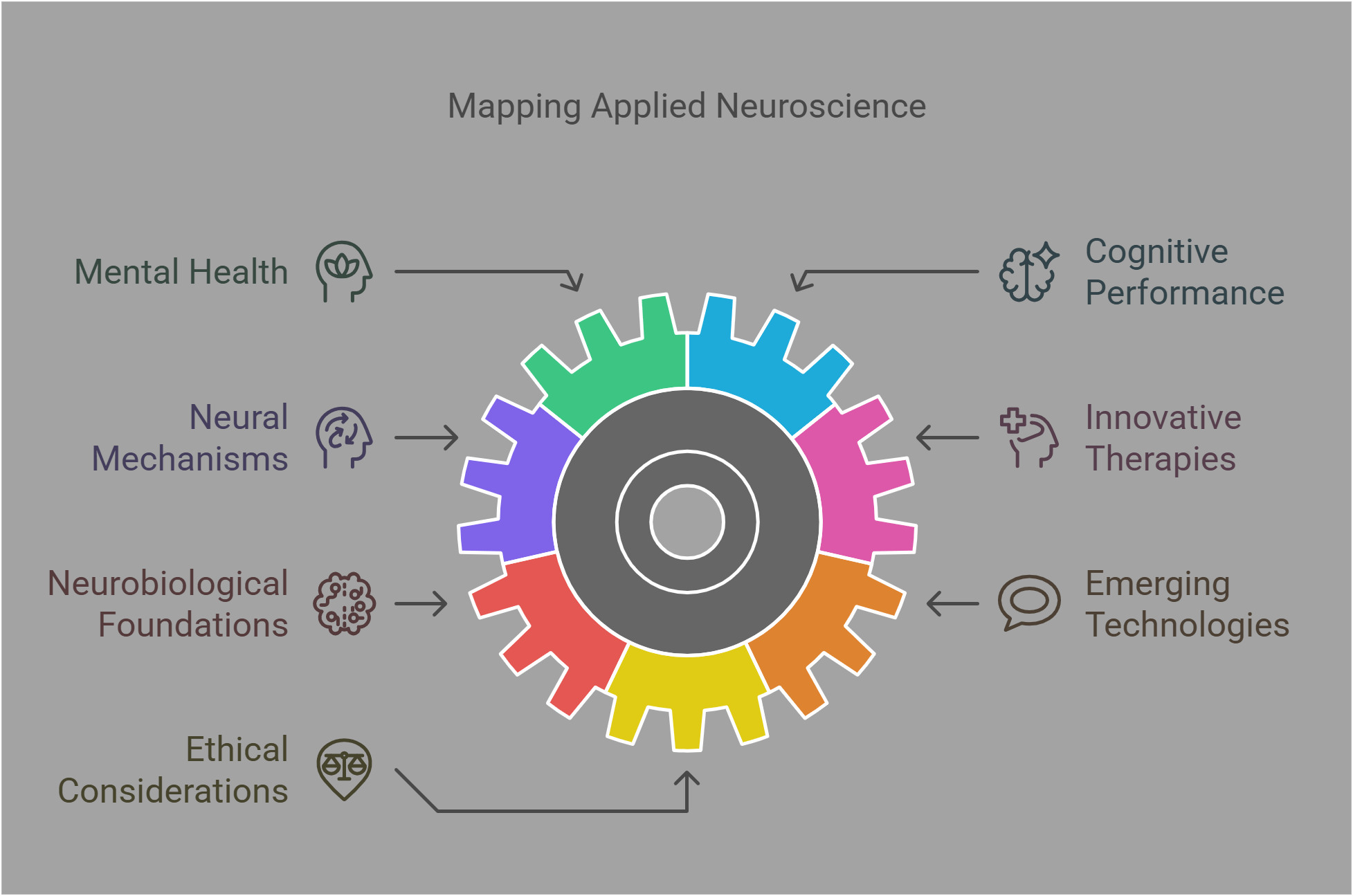
📋 Key Concepts
This guide explores the following essential concepts in applied neuroscience:
- Neurofeedback Techniques
- Neural Basis of Addiction
- Sleep and Memory Consolidation
- Role of the Amygdala in Fear Responses
- Neurogenesis in Adults
- The Default Mode Network (DMN)
- Impact of Exercise on Brain Health
- Neuromodulation Therapies (e.g., TMS, DBS)
- The Gut-Brain Axis
- Neuroethical Implications of Brain Enhancements
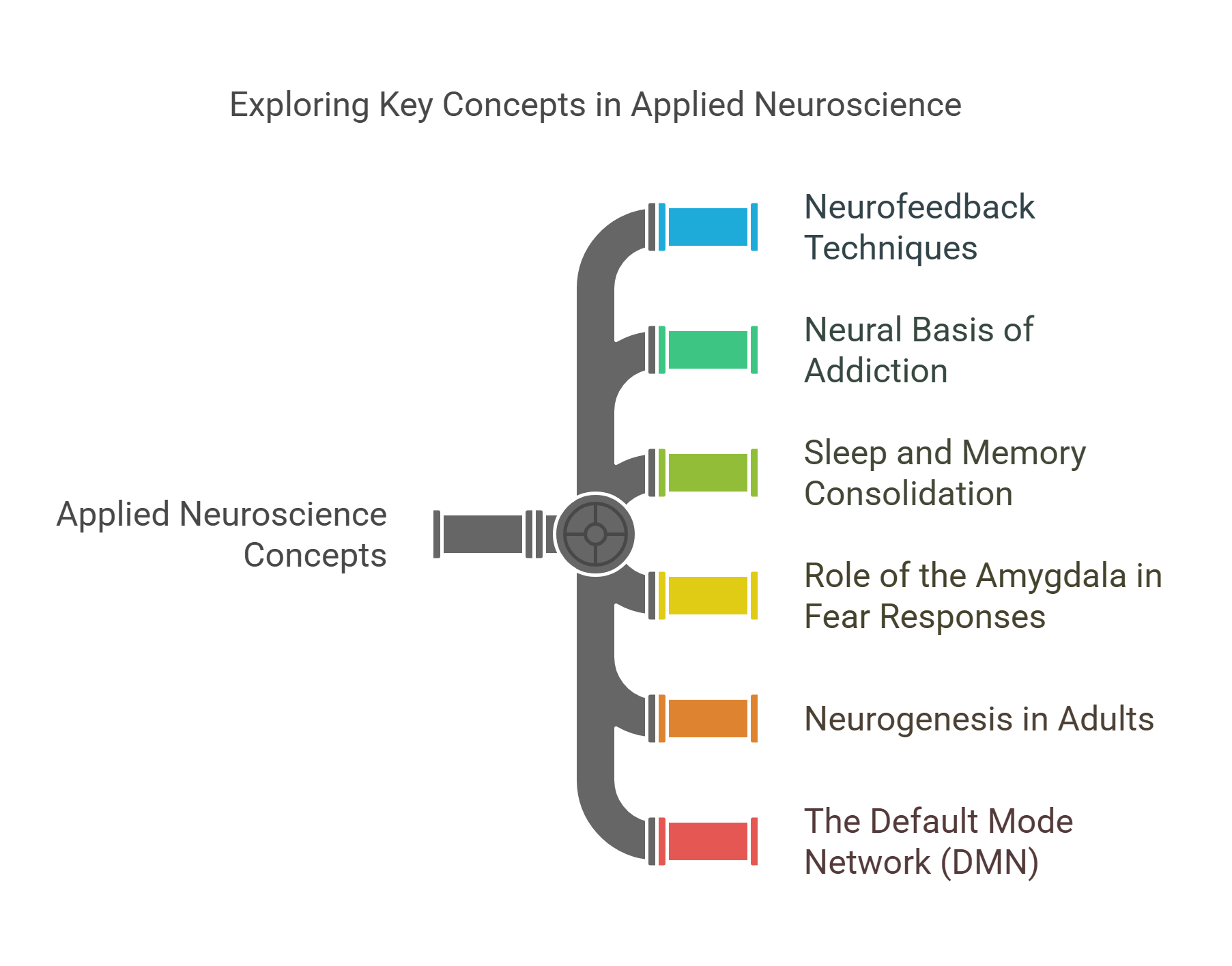
🔍 Detailed Explanations
1. Neurofeedback Techniques
Neurofeedback involves training individuals to regulate their brain activity by providing real-time feedback using EEG or fMRI. This non-invasive therapy aims to improve cognitive and emotional functioning by teaching self-regulation of brain waves.
- Key Mechanisms:
- Electrodes placed on the scalp monitor brain activity.
- Feedback is displayed through visual or auditory cues, encouraging desirable brain patterns.
- Applications:
- Treating ADHD by increasing focus-related beta waves.
- Managing anxiety by reducing excessive alpha waves.
Example: A person with insomnia might use neurofeedback to learn how to lower hyperactive brainwave activity associated with stress.
Explained Simply: Neurofeedback is like a personal brain coach, teaching you how to optimize your mental state by showing you real-time progress.
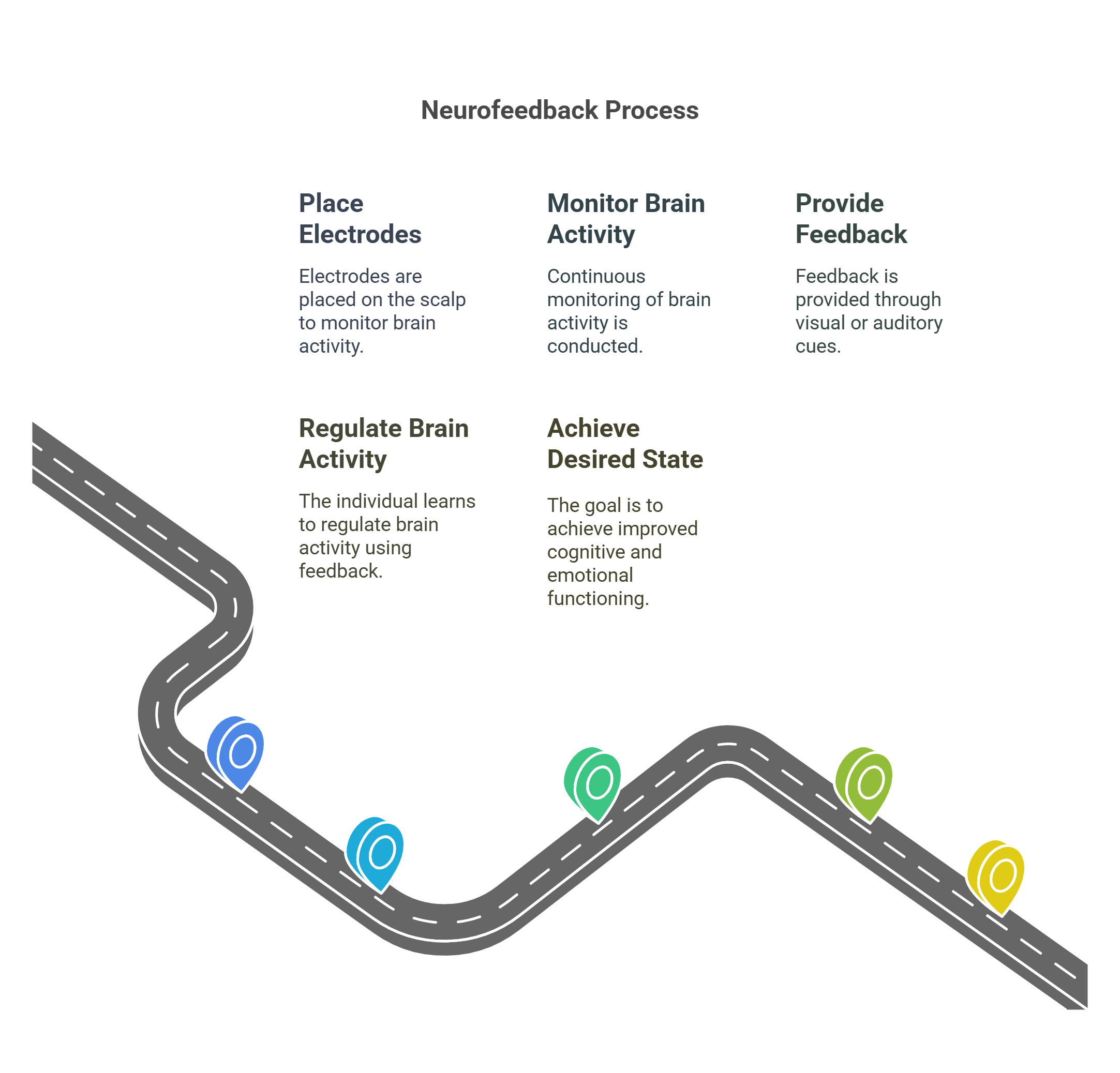
2. Neural Basis of Addiction
Addiction involves changes in the brain’s reward system, particularly in areas like the nucleus accumbens and prefrontal cortex. Addictive substances or behaviors hijack the dopamine pathway, reinforcing cravings and compulsions.
- Key Neural Mechanisms:
- Dopamine Release: Triggers intense feelings of pleasure or euphoria.
- Neuroplasticity: Repeated exposure strengthens maladaptive habits.
- Impaired Prefrontal Control: Reduces the brain’s ability to regulate impulses and decision-making.
- Addiction Cycle:
- Initiation: First exposure to a substance or behavior.
- Dependence: Repeated use leads to tolerance and withdrawal symptoms.
- Relapse: Stress or triggers reactivate cravings.
Example: Cocaine increases dopamine levels dramatically, creating a euphoric high and reinforcing usage.
Explained Simply: Addiction is like a rewired brain circuit where pleasure becomes compulsive, overriding logic and self-control.
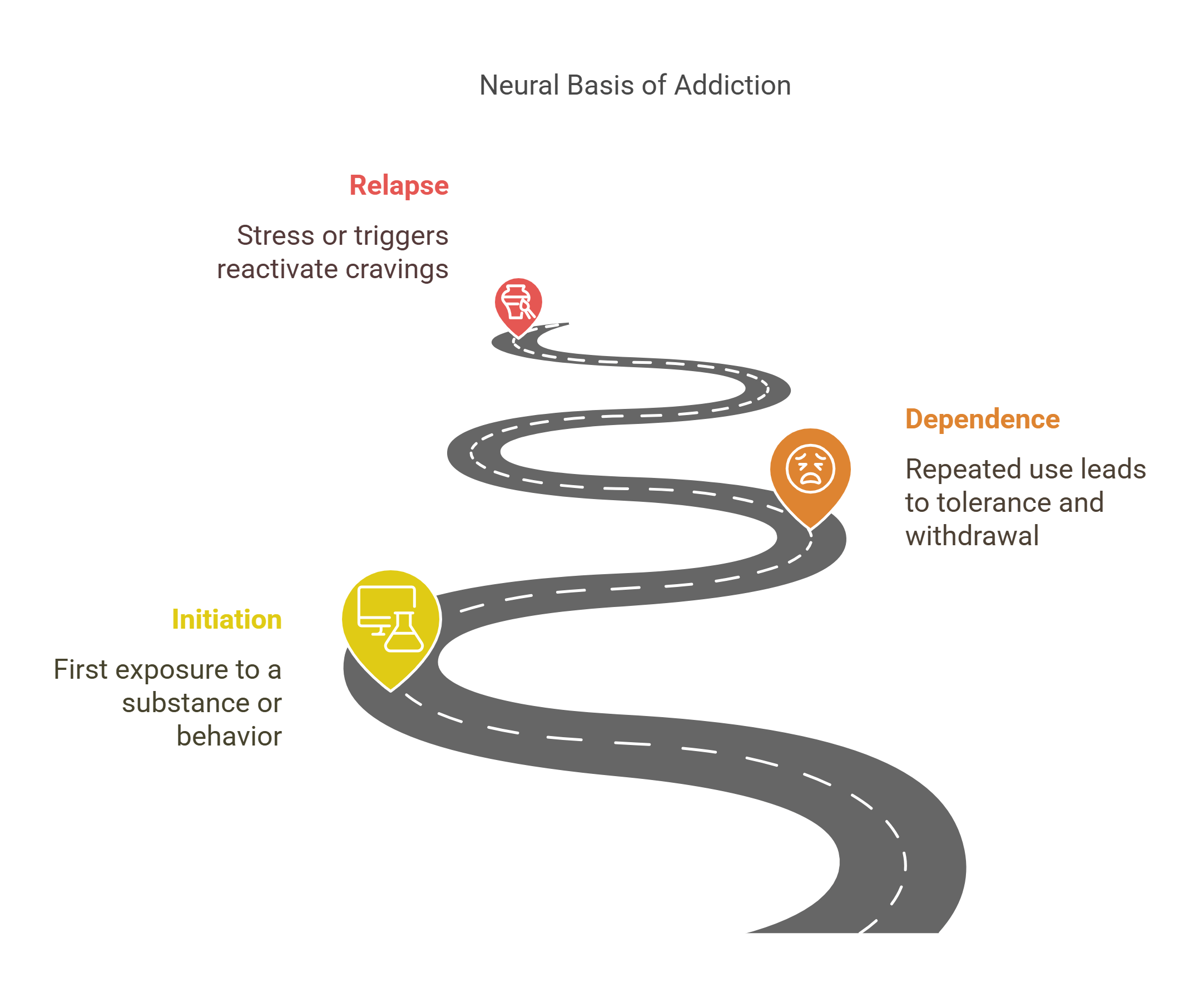
3. Sleep and Memory Consolidation
Sleep plays a critical role in consolidating memories, moving information from short-term storage to long-term storage by reorganizing neural connections.
- Stages of Sleep and Memory:
- REM Sleep: Strengthens emotional and procedural memories.
- Slow-Wave Sleep (SWS): Supports declarative memory (facts and events).
- Mechanisms:
- During sleep, the hippocampus replays recent experiences, reinforcing connections in the cortex.
- Waste clearance by the glymphatic system prevents cognitive decline.
- Applications:
- Sleep deprivation impairs memory retention, affecting academic and workplace performance.
- Optimizing sleep improves learning and recall.
Example: Students who sleep after studying are more likely to retain information than those who pull all-nighters.
Explained Simply: Sleep is like hitting “save” on your brain’s hard drive, preserving what you learned during the day.
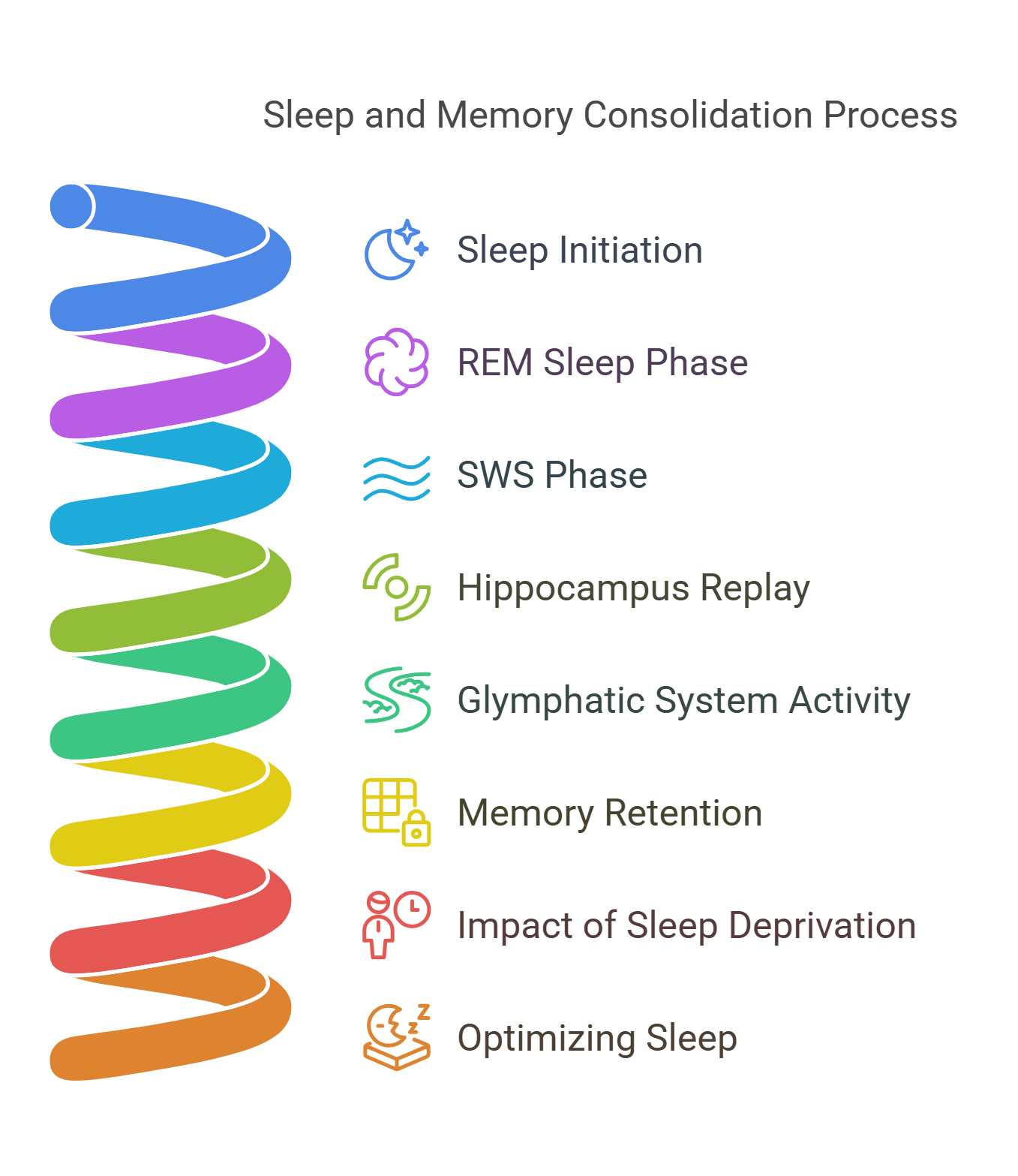
4. Role of the Amygdala in Fear Responses
The amygdala, a small almond-shaped structure in the brain, is central to processing fear and emotional memories. It triggers the fight-or-flight response when a threat is detected.
- Key Functions:
- Evaluates stimuli for potential danger.
- Activates the hypothalamus to release stress hormones.
- Stores emotional memories to recognize future threats.
- Applications:
- Overactivity of the amygdala is linked to anxiety disorders like PTSD.
- Therapies like exposure therapy help desensitize the amygdala to feared stimuli.
Example: Seeing a snake activates the amygdala, causing an immediate fear response to ensure survival.
Explained Simply: The amygdala is like your brain’s alarm system, detecting threats and preparing your body to react.
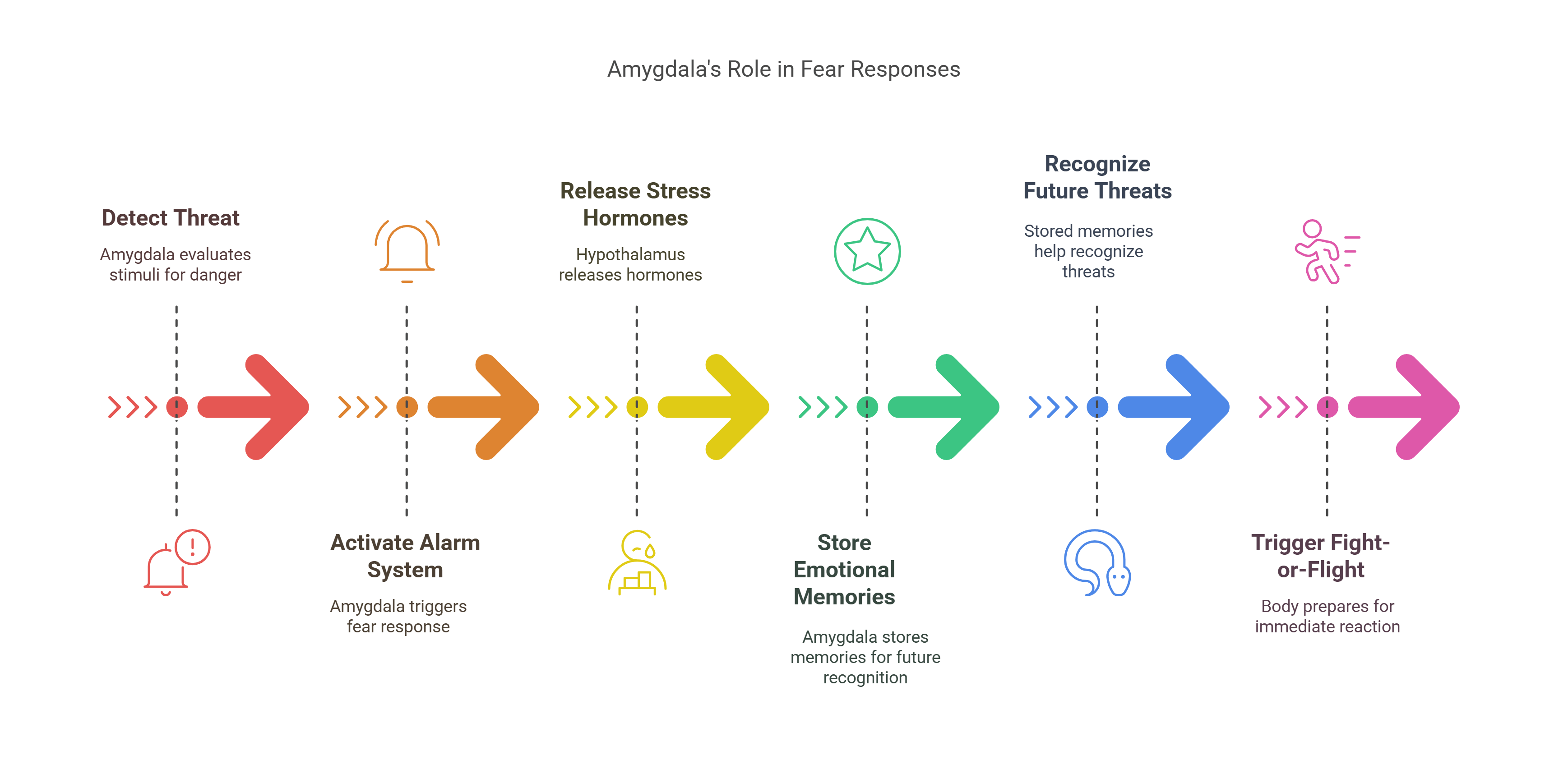
5. Neurogenesis in Adults
Neurogenesis, the production of new neurons, was once thought to occur only during development. However, it also happens in certain adult brain regions, such as the hippocampus, supporting learning and memory.
- Key Triggers:
- Physical exercise (e.g., running increases hippocampal neurogenesis).
- Cognitive engagement (e.g., solving puzzles, learning new skills).
- Stress reduction (e.g., mindfulness practices).
- Applications:
- Enhancing neurogenesis could slow cognitive decline in aging populations.
- Dysfunction in neurogenesis is linked to depression and neurodegenerative diseases.
Example: Rats in enriched environments show increased neurogenesis and perform better in maze tasks.
Explained Simply: Neurogenesis is like planting new seeds in the garden of your brain, keeping it vibrant and functional.
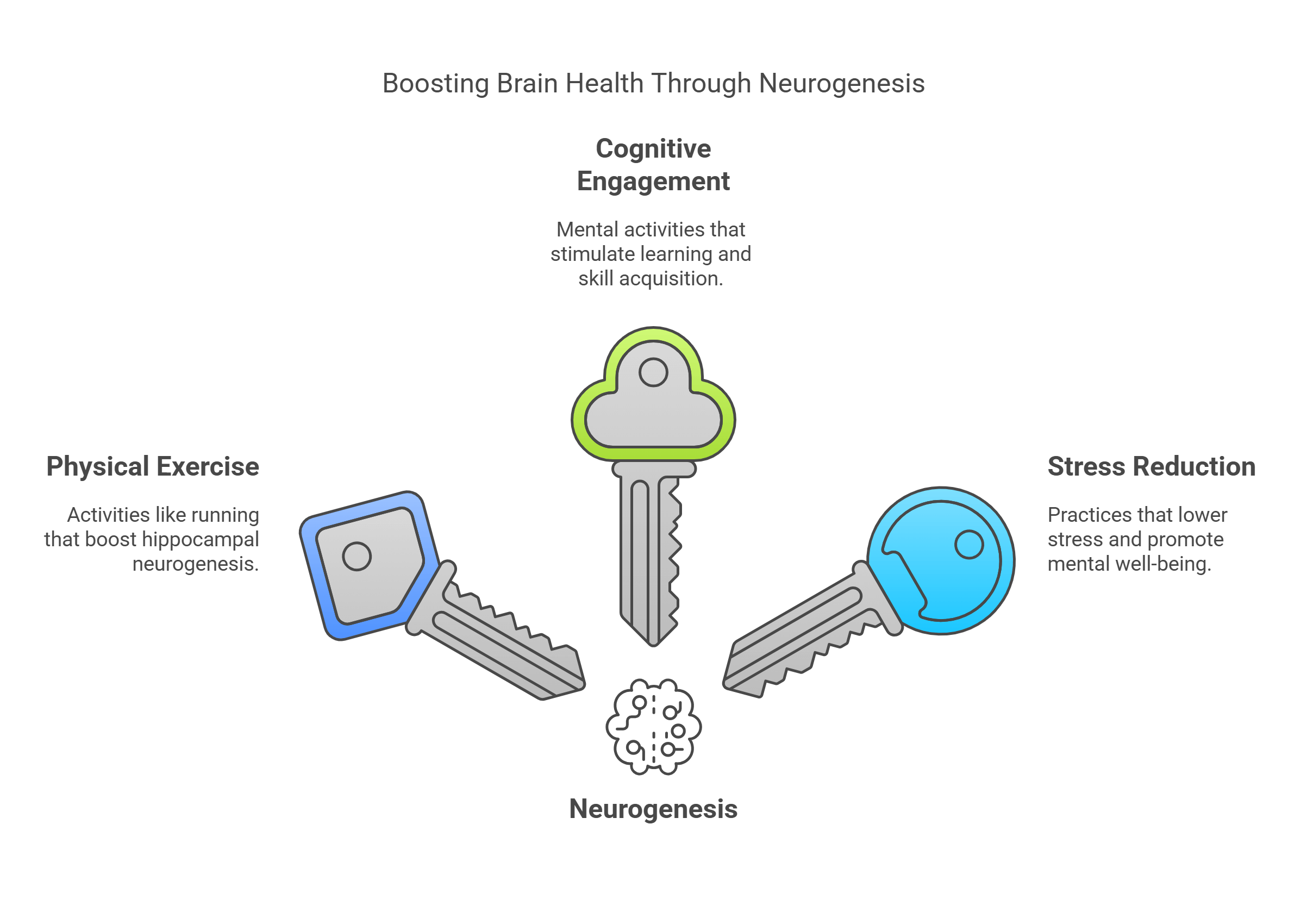
6. The Default Mode Network (DMN)
The Default Mode Network (DMN) is a network of interconnected brain regions active when the mind is at rest and not focused on external tasks. It plays a central role in self-referential thinking, imagination, and memory consolidation.
- Key Functions:
- Self-Reflection: Supports introspection and understanding one’s identity.
- Mind-Wandering: Facilitates creative thinking and problem-solving during downtime.
- Memory Retrieval: Integrates past experiences to inform future decisions.
- Regions Involved:
- Medial prefrontal cortex.
- Posterior cingulate cortex.
- Inferior parietal lobes.
- Applications:
- DMN dysregulation is linked to mental health conditions like depression, anxiety, and ADHD.
- Mindfulness practices help reduce overactivity in the DMN, promoting emotional well-being.
Example: The DMN activates when you daydream or reflect on a meaningful personal event.
Explained Simply: The DMN is like your brain’s background app, running introspection and imagination when you’re not actively focused.
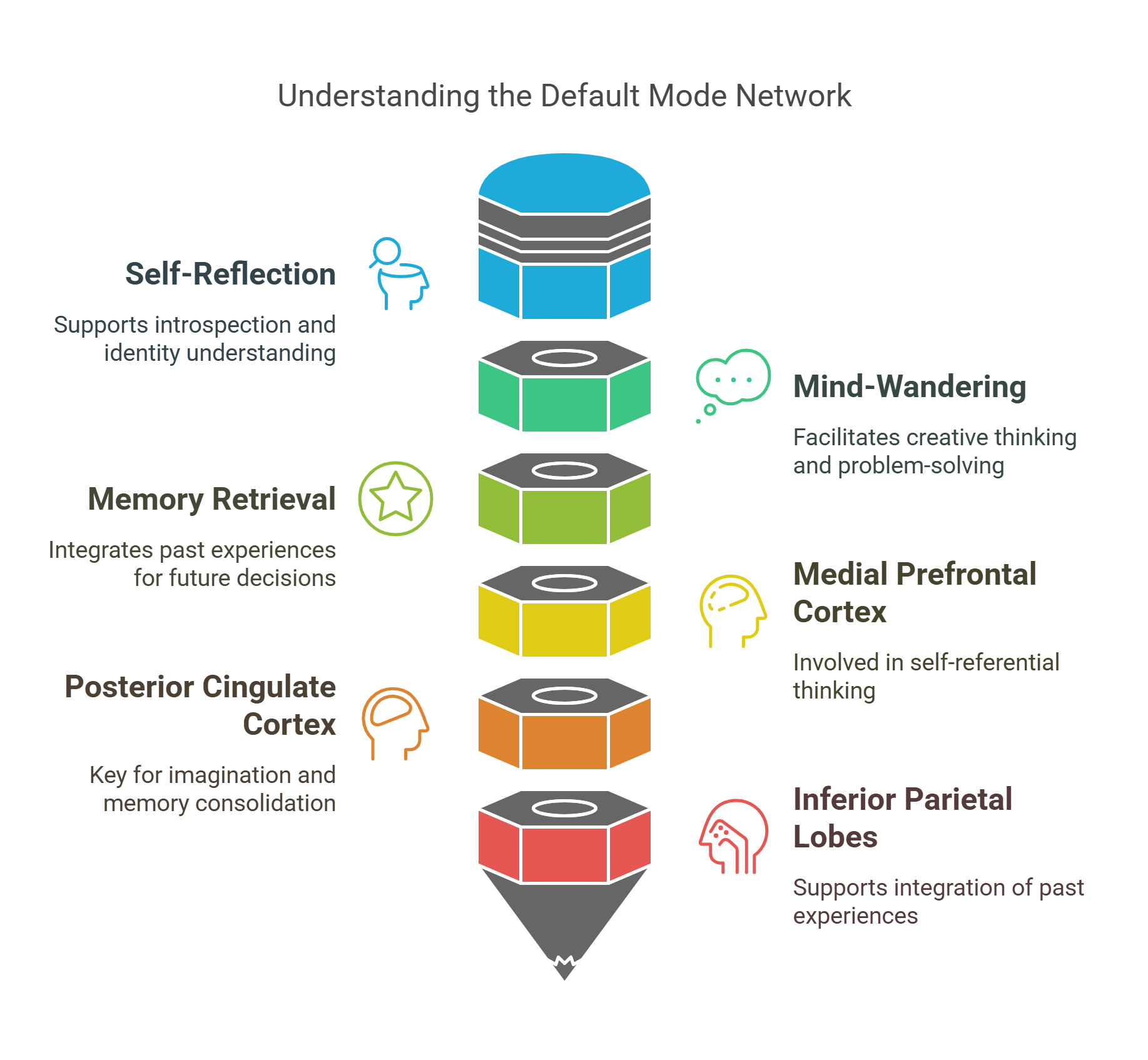
7. Impact of Exercise on Brain Health
Exercise has profound effects on brain health, enhancing cognitive function, emotional well-being, and neuroprotection. Physical activity promotes the release of neurochemicals that support brain growth and repair.
- Key Benefits:
- Neurogenesis: Encourages the growth of new neurons, particularly in the hippocampus.
- Neurotransmitter Balance: Boosts dopamine, serotonin, and endorphins, reducing stress and improving mood.
- Increased Blood Flow: Enhances oxygen and nutrient delivery to the brain.
- Applications:
- Regular exercise reduces the risk of neurodegenerative diseases like Alzheimer’s.
- Aerobic activities improve memory and attention in both children and adults.
Example: A study found that older adults who walked briskly for 30 minutes daily showed improved cognitive performance.
Explained Simply: Exercise is like a brain workout, strengthening mental muscles and keeping your mind sharp.
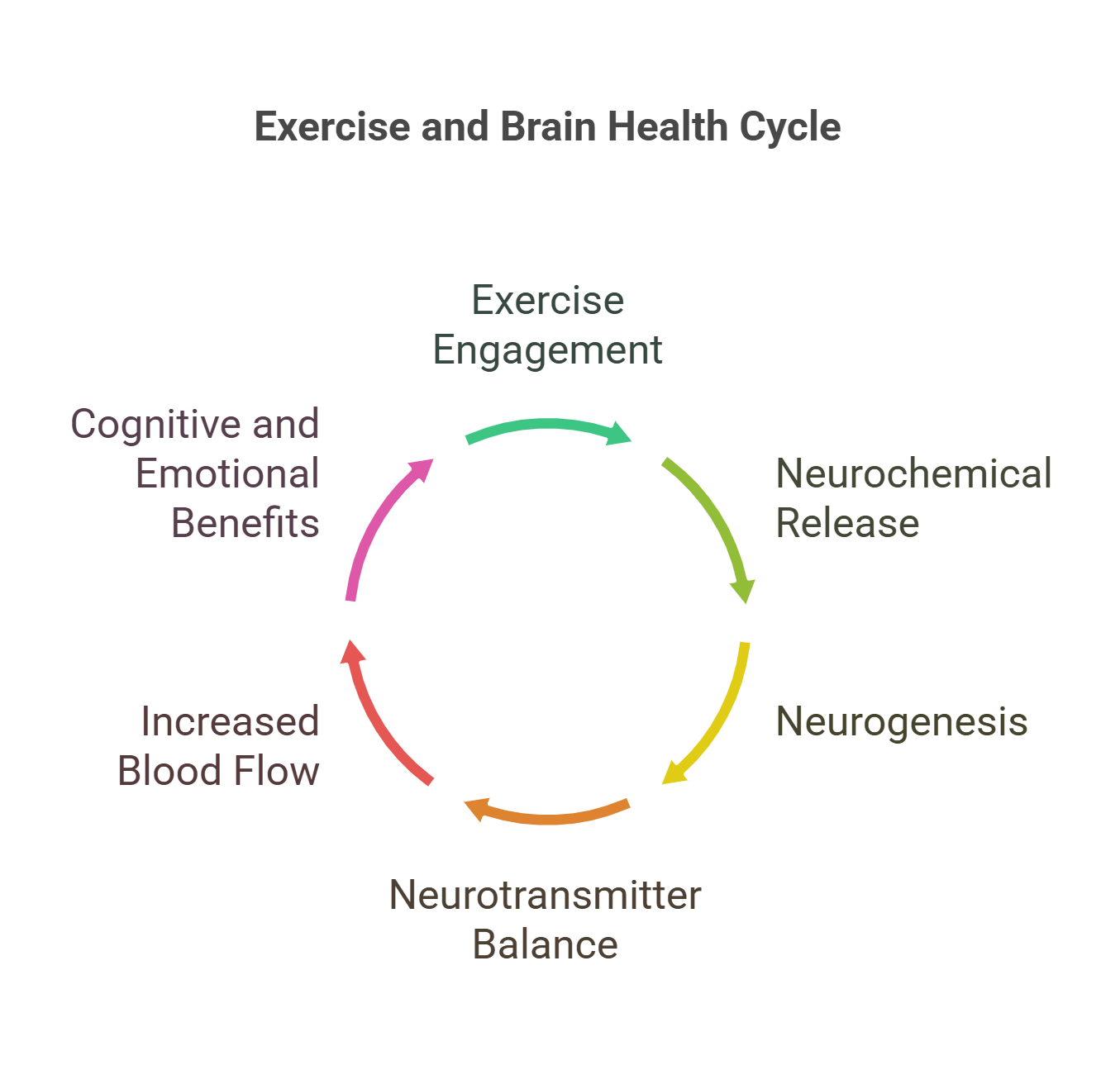
8. Neuromodulation Therapies (e.g., TMS, DBS)
Neuromodulation therapies use electrical or magnetic stimulation to regulate neural activity, offering treatments for neurological and psychiatric conditions.
- Types of Neuromodulation:
- Transcranial Magnetic Stimulation (TMS): Uses magnetic fields to stimulate or inhibit specific brain regions. Commonly used for depression.
- Deep Brain Stimulation (DBS): Involves surgically implanted electrodes delivering electrical impulses to targeted areas, such as for Parkinson’s disease.
- Vagus Nerve Stimulation (VNS): Stimulates the vagus nerve to treat epilepsy and depression.
- Applications:
- Managing treatment-resistant depression, OCD, and chronic pain.
- Restoring motor function in Parkinson’s patients.
Example: DBS has dramatically improved motor control in individuals with severe Parkinson’s by modulating activity in the basal ganglia.
Explained Simply: Neuromodulation therapies are like tuning the brain’s electrical circuits to restore balance and functionality.
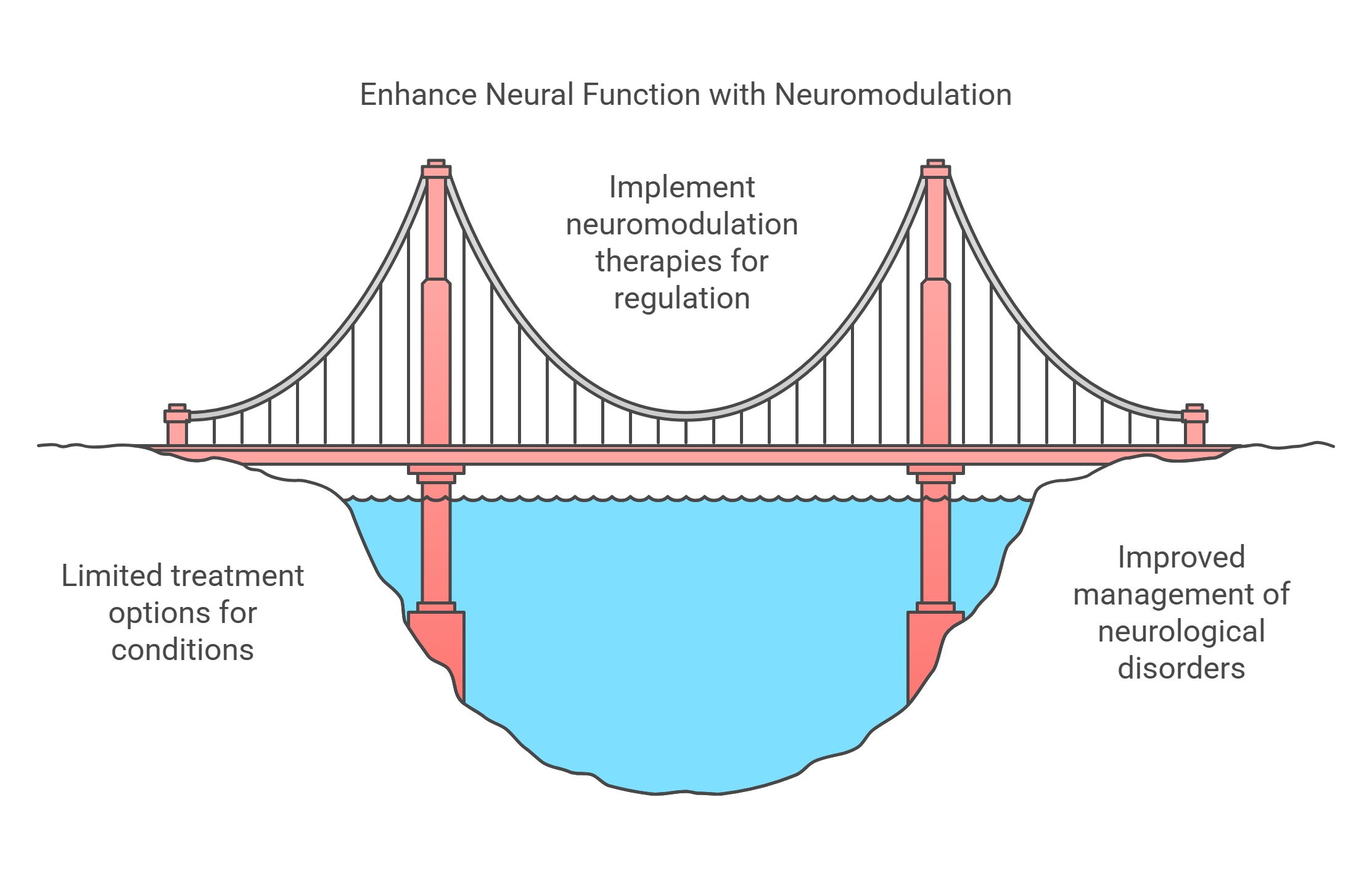
9. The Gut-Brain Axis
The gut-brain axis refers to the bidirectional communication between the gut microbiome and the central nervous system, highlighting the interplay between digestion, emotions, and cognition.
- Key Components:
- Microbiome: Gut bacteria produce neurotransmitters like serotonin, influencing mood and behavior.
- Vagus Nerve: Acts as a communication highway between the gut and the brain.
- Immune System: Gut health affects systemic inflammation, impacting mental health.
- Applications:
- Gut dysbiosis (microbial imbalance) is linked to conditions like anxiety, depression, and IBS.
- Probiotics and dietary changes can improve both gut health and mental well-being.
Example: Fermented foods like yogurt and kimchi promote healthy gut bacteria, which may reduce stress and improve focus.
Explained Simply: The gut-brain axis is like a hotline between your stomach and mind, keeping both in sync for optimal health.
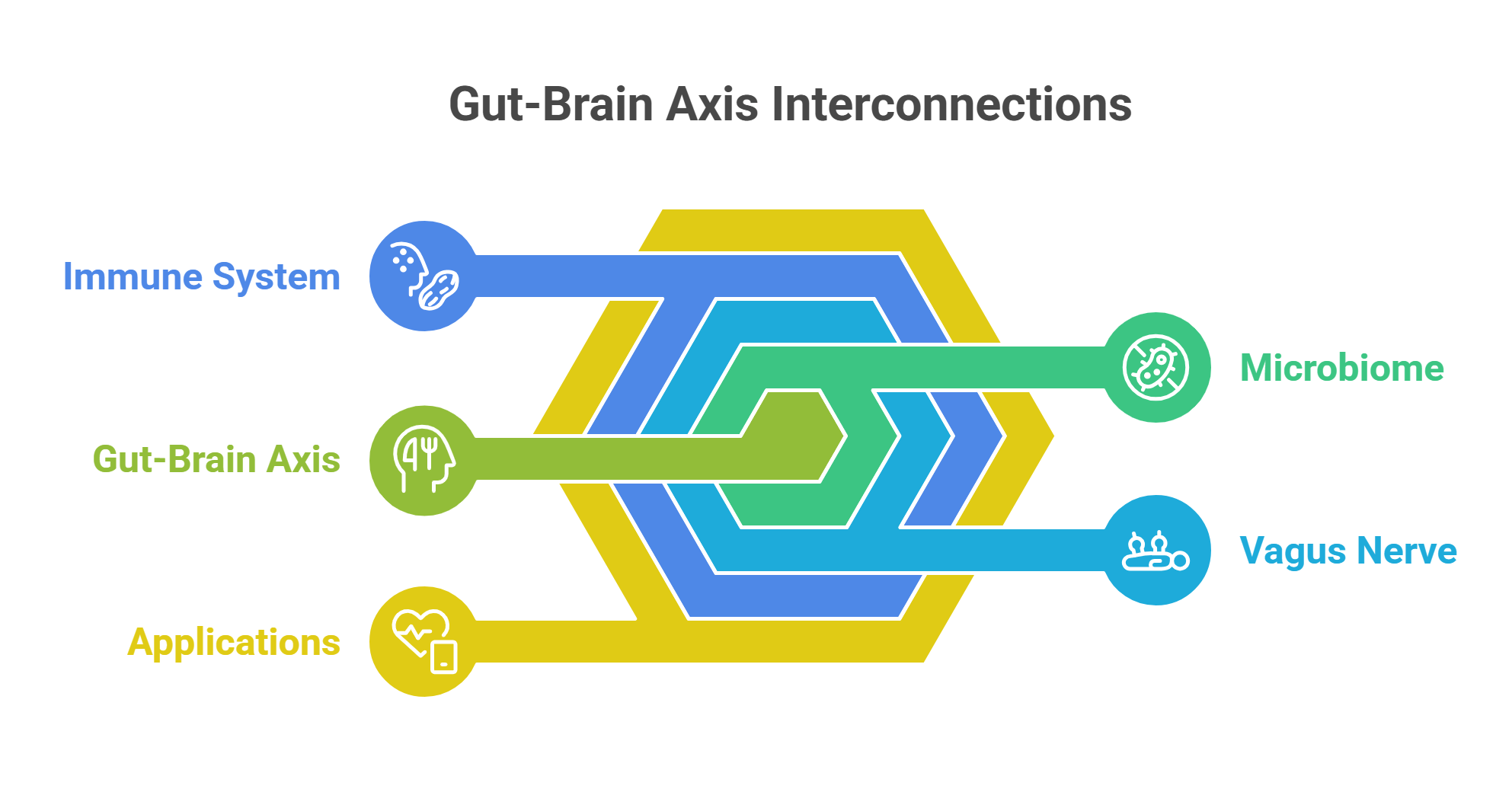
10. Neuroethical Implications of Brain Enhancements
Neuroethics examines the moral and societal implications of technologies and interventions that enhance brain function, such as cognitive enhancers, brain-computer interfaces (BCIs), and neurostimulation.
- Key Ethical Concerns:
- Fair Access: Ensuring enhancements are not limited to privileged groups, exacerbating inequality.
- Consent: Guaranteeing informed and voluntary participation in brain enhancement procedures.
- Identity and Authenticity: Debates over whether enhancements alter a person’s sense of self.
- Applications:
- Cognitive enhancers like Ritalin and modafinil are used off-label by students and professionals seeking performance boosts.
- BCIs enable paralyzed individuals to control devices with their thoughts but raise concerns about privacy and autonomy.
Example: Elon Musk’s Neuralink proposes merging humans with AI via BCIs, raising ethical questions about the future of human cognition.
Explained Simply: Neuroethics asks whether enhancing the brain is progress or a Pandora’s box of moral dilemmas.
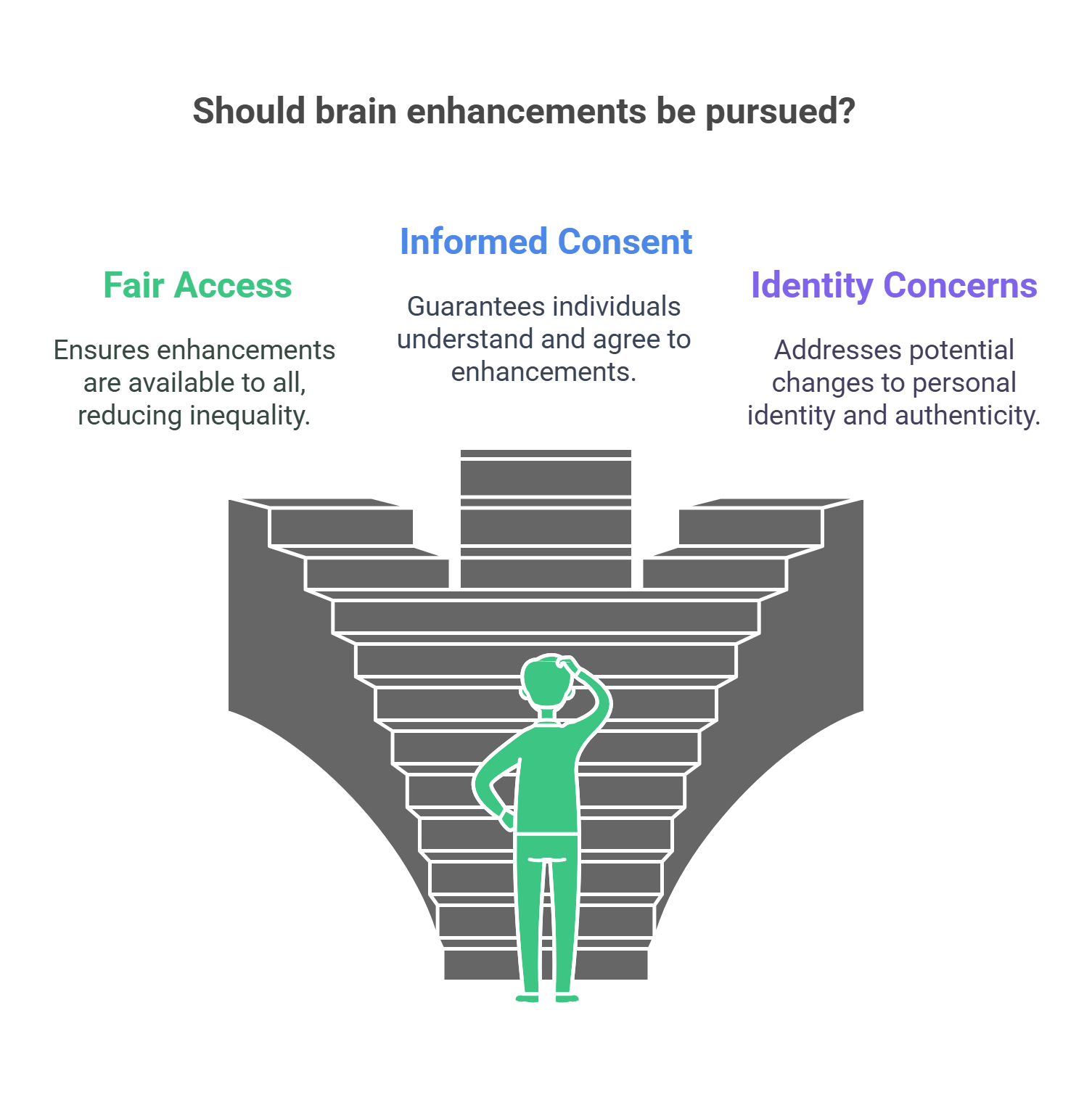
✨ Conclusion
Applied neuroscience offers profound insights into how the brain works and how to harness its potential for better mental and physical health. By exploring concepts like neurofeedback, the gut-brain axis, and neuroethical concerns, readers can critically analyze RC passages and appreciate how neuroscience continues to shape our understanding of human life.










